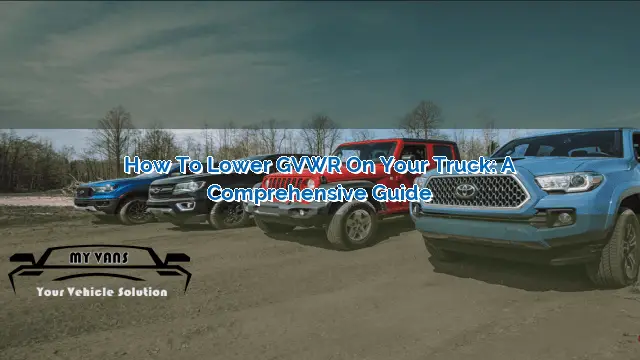
If you own a truck, you know that the Gross Vehicle Weight Rating (GVWR) is an essential factor that determines the maximum weight your vehicle can carry. However, sometimes you may need to reduce the GVWR to comply with regulations or improve your truck’s performance. In this guide, we’ll explore various ways to lower the GVWR on your truck without compromising safety or quality.
Understanding GVWR
Before we dive into the details, let’s review what GVWR means. GVWR is the maximum weight your truck can carry, including the vehicle, passengers, cargo, and fuel. It’s calculated by adding the curb weight (the weight of the empty truck) to the payload capacity (the weight of the cargo and passengers). Exceeding the GVWR can cause safety issues, such as brake failure, tire blowouts, or suspension problems.
Reducing Payload
One of the easiest ways to lower the GVWR is to reduce the payload. You can do this by removing unnecessary items from the truck, such as tools, equipment, or spare tires. You can also downsize your cargo by using lighter materials or packing more efficiently. Additionally, you can limit the number of passengers or use smaller seats to reduce the weight. By lowering the payload, you decrease the overall weight of the truck and increase its capacity to carry heavier items.
Upgrading Suspension
Another way to lower the GVWR is to upgrade the suspension system. A better suspension can distribute the weight more evenly and reduce the stress on the tires, brakes, and axles. You can add leaf springs, airbags, or shocks to enhance the ride quality and stability. Moreover, you can install sway bars, traction bars, or steering stabilizers to improve the handling and control. By upgrading the suspension, you can increase the capacity of your truck without compromising safety or comfort.
Changing Tires
The type and size of the tires on your truck can affect the GVWR as well. By changing the tires, you can alter the weight distribution and balance of the vehicle. For instance, you can switch to smaller, lighter tires to reduce the overall weight and increase the clearance. Alternatively, you can use larger, stronger tires to improve the traction and durability. You can also adjust the tire pressure to optimize the performance and efficiency. By changing the tires, you can fine-tune the GVWR to suit your needs and preferences.
Upgrading Brakes
The braking system is crucial for the safety and reliability of your truck. By upgrading the brakes, you can improve the stopping power and reduce the risk of accidents. You can install larger brake pads, rotors, or calipers to increase the surface area and friction. You can also use better brake fluid or brake lines to enhance the responsiveness and durability. Moreover, you can add a brake controller or trailer brake to control the speed and weight of the cargo. By upgrading the brakes, you can ensure that your truck can handle any load and terrain with confidence.
Modifying Engine
Finally, you can modify the engine of your truck to lower the GVWR. By increasing the horsepower, torque, or fuel efficiency, you can reduce the strain on the vehicle and improve its performance. You can add a performance chip, air intake, or exhaust system to boost the power and speed. You can also tune the engine to optimize the fuel consumption and emissions. However, be aware that some modifications may void the warranty or violate the regulations. Consult a professional mechanic or engineer before making any significant changes to your truck.
In conclusion, lowering the GVWR on your truck requires careful planning and execution. You can reduce the payload, upgrade the suspension, change the tires, upgrade the brakes, or modify the engine to achieve the desired result. However, always prioritize safety, reliability, and compliance over convenience or aesthetics. If you have any doubts or questions, consult the owner’s manual, the manufacturer, or a certified mechanic.
 MyVans Your Vehicle Solution
MyVans Your Vehicle Solution